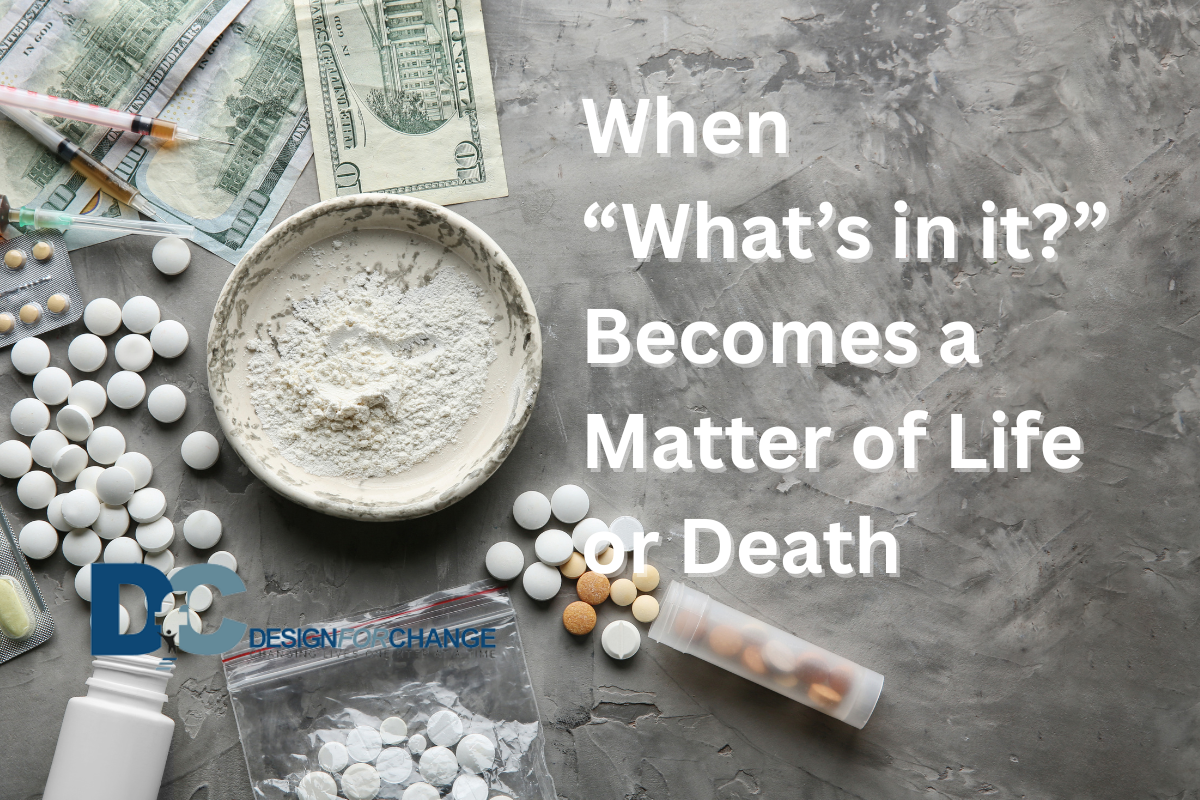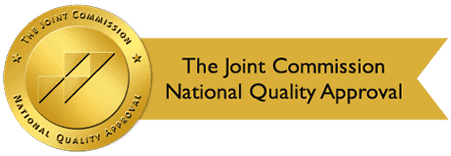By: Design for Change Recovery
Categories:
When “What’s in it?” Becomes a Matter of Life or Death
You are here:The Growing Threat of Synthetic Adulterants and Mix-and-Match Drug Cocktails
In 2025, one of the most alarming trends in substance use is not simply which drugs people are using, but what those drugs actually contain. Traditional “street drugs” are increasingly being mixed, cut, or completely replaced with powerful synthetic adulterants—and many users don’t know what they’re ingesting.
Why It’s Happening
-
Profit and efficiency: Synthetic drugs can be made in bulk at low cost. Dealers often mix fentanyl analogues, tranquilizers like xylazine, or other designer compounds to stretch supply and boost potency.
-
Supply chain changes: As law enforcement monitors precursor chemicals, traffickers pivot to novel psychoactive substances (NPS) that are harder to regulate or detect.
-
Polydrug mixing: Cocaine laced with fentanyl, meth combined with xylazine, counterfeit “prescription” pills pressed with synthetic opioids—drug cocktails are increasingly common, raising the risk of overdose dramatically.
What It Means for Californians
California has been hit especially hard by synthetic adulterants. According to the California Overdose Surveillance Dashboard, fentanyl was involved in more than two-thirds of opioid overdose deaths in the state last year. In Los Angeles County alone, deaths involving methamphetamine mixed with fentanyl more than doubled in the past three years.
This means:
-
Overdoses are harder to reverse: Naloxone works on opioids, but not on additives like xylazine.
-
Unexpected medical complications: Adulterants can cause severe tissue damage, seizures, or organ failure.
-
Treatment is more complex: Detox protocols must account for multiple substances at once.
How Treatment Programs Can Respond
1. Harm Reduction First
Encouraging safe practices, drug-checking services, naloxone distribution, and education saves lives. California has expanded naloxone access through pharmacies and community groups—yet many at-risk individuals still don’t know how or where to access it.
2. Medical Preparedness
Hospitals and treatment centers in California are seeing clients with wounds and medical complications from xylazine. Programs must integrate wound care, infection management, and long-term medical monitoring alongside recovery counseling.
3. Flexible Detox and Treatment
Because clients often don’t know what they’ve ingested, California rehab facilities must adapt detox to include unpredictable withdrawal syndromes. This requires:
-
Longer monitoring periods.
-
Care teams trained in both medical stabilization and trauma-informed therapy.
-
Collaboration between addiction counselors, physicians, and mental health specialists.
4. Building on Lived Experience
California’s diverse recovery community has always been a powerful resource. Many individuals in treatment have firsthand knowledge of emerging drug trends—making them essential voices for shaping services, outreach, and peer support.
California-Specific FAQ: Synthetic Adulterants & Addiction Treatment
Q1. How common is fentanyl adulteration in California?
Extremely common. The California Department of Public Health reports that fentanyl is now present in nearly half of all street drug seizures, including stimulants and counterfeit pills. This means people buying cocaine, meth, or Xanax “look-alikes” are at risk of unintentional opioid overdose.
Q2. What is California doing to address xylazine (“tranq”)?
California issued a health alert in 2023 after detecting xylazine in multiple drug samples. While xylazine isn’t an opioid, it’s often combined with fentanyl. Emergency departments in Los Angeles and San Francisco now train staff to identify xylazine wounds and complications. However, naloxone still remains the first line of defense for suspected overdoses because fentanyl is usually involved.
Q3. Can I get naloxone (Narcan) in California without a prescription?
Yes. California law allows most pharmacies to dispense naloxone without a doctor’s prescription. In addition, many county health departments and community organizations distribute free kits. Programs like Naloxone Distribution Project have expanded access statewide.
Q4. If someone doesn’t know what they’ve taken, how should a treatment center respond?
California rehabs—including Design for Change Recovery—adapt detox by:
-
Running medical screenings upon intake.
-
Monitoring vitals for longer periods.
-
Preparing for overlapping withdrawal symptoms (opioids, stimulants, sedatives).
-
Coordinating with hospitals if advanced medical care is needed.
Q5. Are counterfeit pills a big problem in California?
Yes. The DEA’s San Francisco Division warns that 6 out of 10 counterfeit pills seized in California contain a potentially lethal dose of fentanyl. These pills are often sold as “Oxycodone,” “Percocet,” or “Xanax.” Many overdoses occur because people believe they’re taking legitimate medication.
Q6. How do California rehabs like Design for Change handle synthetic drug trends?
We use a comprehensive, individualized approach:
-
Medical detox supervised by licensed professionals.
-
Individual and group counseling tailored to both substance use and mental health.
-
Education about emerging drug risks so clients are empowered in recovery.
-
Family programs that help loved ones understand the risks of today’s drug supply.
Q7. What if I can’t commit to long-term rehab in California?
California has a variety of treatment lengths, including short-term detox, outpatient care, and intensive 10-, 14-, and 21-day programs. At Design for Change, we offer flexible treatment plans to meet individual needs—because recovery should be accessible, not one-size-fits-all.
Q8. How do I know if a California rehab is legitimate?
Look for:
-
Licensing and certification through DHCS (Department of Health Care Services).
-
Accreditation from organizations like The Joint Commission.
-
Transparent treatment programs and staff credentials (such as CATC-I certified counselors).
Design for Change meets all of these standards and has been recognized for compassionate, client-centered care.
Q9. How do California rehabs support families of those struggling with addiction?
At Design for Change, we provide:
-
Family counseling to rebuild trust and healthy communication.
-
Education sessions on addiction science and recovery.
-
Aftercare planning so families know how to support their loved one post-treatment.
Q10. What should I do if I suspect a loved one is using adulterated drugs in California?
-
Keep naloxone on hand and learn how to use it.
-
Encourage them to get tested or seek medical care if they show unusual symptoms.
-
Reach out to a licensed California treatment center like Design for Change.
-
Avoid judgmental conversations—compassion and support open the door to recovery.
Final Thoughts
The drug landscape in California is shifting faster than ever. With synthetic adulterants and drug cocktails now the norm, overdose risks are higher, and treatment needs are more complex.
But there is hope. Through education, harm reduction, medical preparedness, and compassionate recovery programs, Californians can find safety, healing, and long-term recovery. At Design for Change Recovery, we’re committed to meeting this challenge head-on—because every person deserves the chance to start fresh, no matter what substances brought them here.


